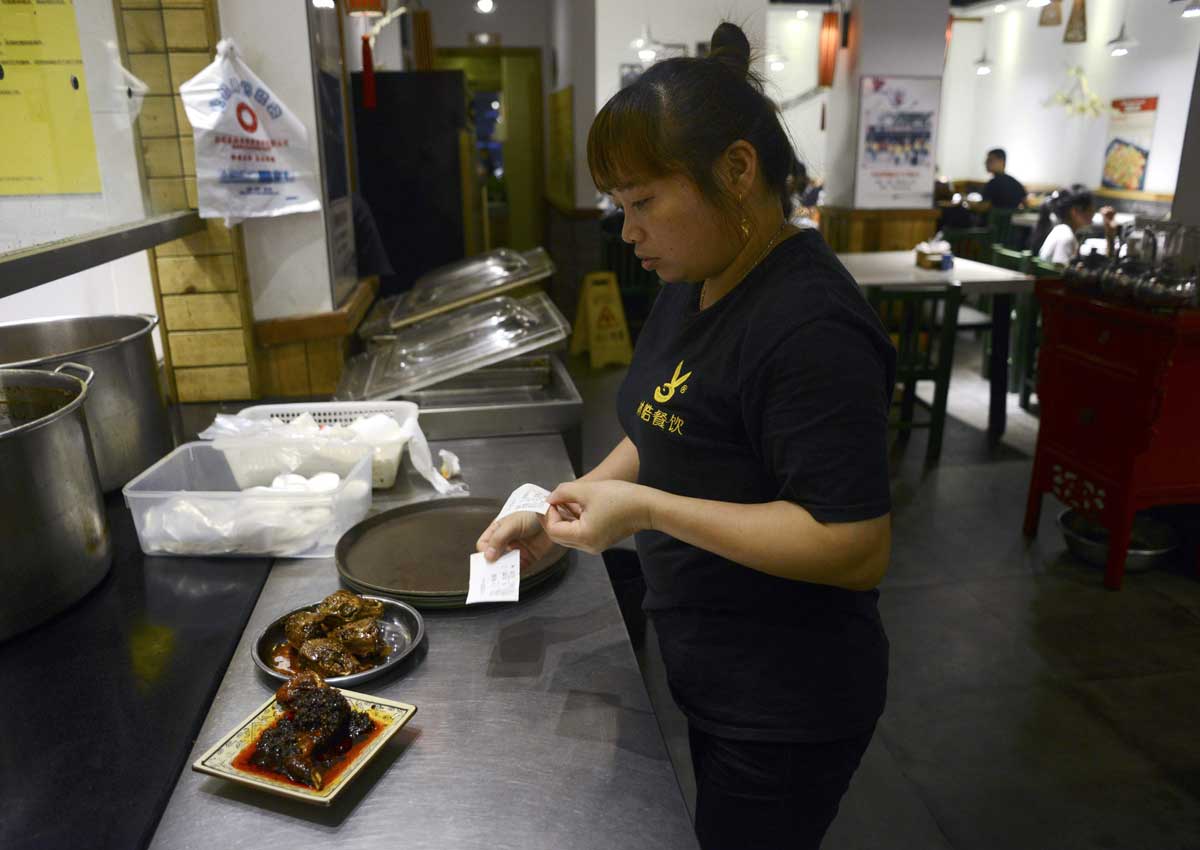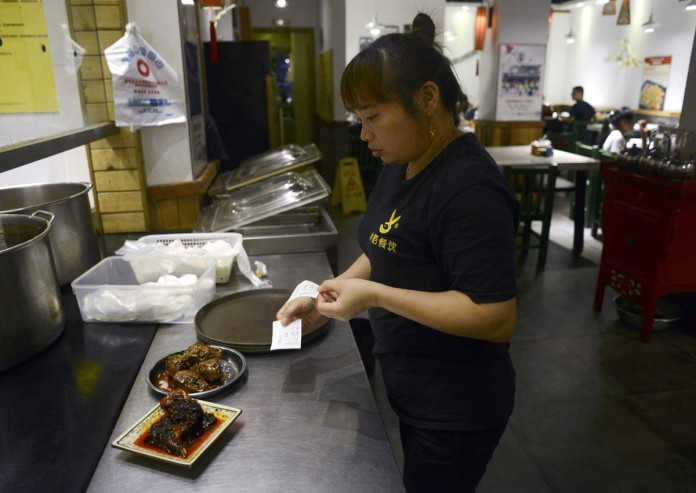Chengdu, China –
Chinese diners avariciously cracked the delicate rabbit skulls, thrown off their contents, and caught up in such a popular delicacy in a province that it had to be imported from France.
Sichuan is famous for its spicy, chili-flavored local dishes: one of the favorite is the rabbit brain, often in the streets of Chengdu, its capital for dinner.
In the city’s famous restaurant Shuangliu La Tuutu, dozens of customers use gloved hands to open the skull covered with soy sauce, sucking out the brain in the satisfaction of chewing and chewing cheek.
“If the Sichuanese do not eat spicy food every day, they are not happy,” a 20-year-old woman, named Ma, with friends to eat.
“I eat at least once a week,” she added.
Westerners often avoid the animal parts – duckbill, chicken feet, head and belly – Chinese cuisine as a delicacy.
But even in China, there is little hope for the meat of the rabbits, let alone their heads. These minds are a remote province in Sichuan, isolated by mountains.
The dish is a specialty of the region – rarely found in several popular restaurants in Beijing and other major cities.
“Two of the three rabbits consumed in China eat in Sichuan,” said Wang Min, a restaurant manager in Chengdu. “The locals are proud of the snacks.
“My parents and grandparents ate them, and I grew up liking them,” she says, adding that traditions can be traced back to centuries.
“My friends in Guangxi (Southern Province) and elsewhere do not understand why we eat them,” she said, adding that “they can not stand the heat.”
In Wang’s restaurant, chef Yin Dingjun said rabbit head recipe looks simple, but needs a sound technology.
“You have to drain their blood from the rabbit, then remove the guts,” and “marinate in the broth for several hours,” he said.
“Rabbit in Chinese mythology features (” Rabbit “live on the moon), is considered by many young people to be cute, and is not considered a delicious, although in Sichuan dialect eat rabbit Head is slang for French kissing.
Although sucking on a rabbit’s head seems strange to some diners, even in China, it is the standard for Sichuan cuisine, Fuchsia Dunlop, a London-based Chinese food expert told AFP.
“There are a lot of spicy dishes, such as spicy duck head, covered with peppers and peppers,” she said.
For Sichuanese, playing with your food is part of the fun, she says, adding that they like the “grabbing factor”.
“Use your fingers and teeth to get a little bit of meat, which is part of the fun.
According to China’s Rabbit Industry Association, the country’s annual consumption of about 500 million rabbit head.
When the evening in Chengdu, numerous booths selling rabbit head to the locals with beer washing treatment.
“The night market is part of our culture in Sichuan,” said Rong Lipeng, assistant to Hage, China’s leading supplier of rabbit meat and products.
He sells more than 8 million rabbits per year. But in the face of huge local demand, Chinese farms are struggling to supply enough.
As a result, nearly 20 per cent of the head of the company’s sales of rabbits comes from Europe, mainly from Italy and France, in the same way that American chicken producers export unappreciated birds to the Chinese market.
According to the French government statistics, France in 2014 to China exported 166 tons of meat and edible offal.
Rong, who says the head is healthy, because they contain a small amount of meat, hoping the taste of this treatment will one day extend beyond Sichuan, but he acknowledged that the obstacles are high.
“Many of us outside the province did not dare to taste them, because the rabbit head looks terrible.






